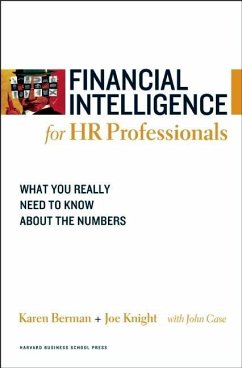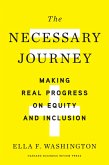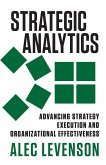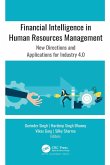As an HR manager, you're expected to use financial data to make decisions, allocate resources, and budget expenses. But if you're like many human resource practitioners, you may feel uncertain or uncomfortable incorporating financials into your day-to-day work.
Using the groundbreaking formula they introduced in their book Financial Intelligence: A Manager's Guide to Knowing What the Numbers Really Mean, Karen Berman and Joe Knight present the essentials of finance specifically for HR experts.
Drawing on their work training tens of thousands of managers and employees at leading organizations worldwide, the authors provide a deep understanding of the basics of financial management and measurement, along with hands-on activities to practice what you are reading. You'll discover:
· Why the assumptions behind financial data matter
· What your company's income statement, balance sheet, and cash flow statement really reveal
· Which financials may be needed when you're developing a human capital strategy
· How to calculate return on investment
· Ways to use financial information to better support your business units and do your own job
· How to instill financial intelligence throughout your team
Authoritative and accessible, Financial Intelligence for HR Professionals, empowers you to "talk numbers" confidently with your boss, colleagues, and direct reports -- and understand how the financials impact your part of the business.
Using the groundbreaking formula they introduced in their book Financial Intelligence: A Manager's Guide to Knowing What the Numbers Really Mean, Karen Berman and Joe Knight present the essentials of finance specifically for HR experts.
Drawing on their work training tens of thousands of managers and employees at leading organizations worldwide, the authors provide a deep understanding of the basics of financial management and measurement, along with hands-on activities to practice what you are reading. You'll discover:
· Why the assumptions behind financial data matter
· What your company's income statement, balance sheet, and cash flow statement really reveal
· Which financials may be needed when you're developing a human capital strategy
· How to calculate return on investment
· Ways to use financial information to better support your business units and do your own job
· How to instill financial intelligence throughout your team
Authoritative and accessible, Financial Intelligence for HR Professionals, empowers you to "talk numbers" confidently with your boss, colleagues, and direct reports -- and understand how the financials impact your part of the business.
Dieser Download kann aus rechtlichen Gründen nur mit Rechnungsadresse in A, D ausgeliefert werden.









